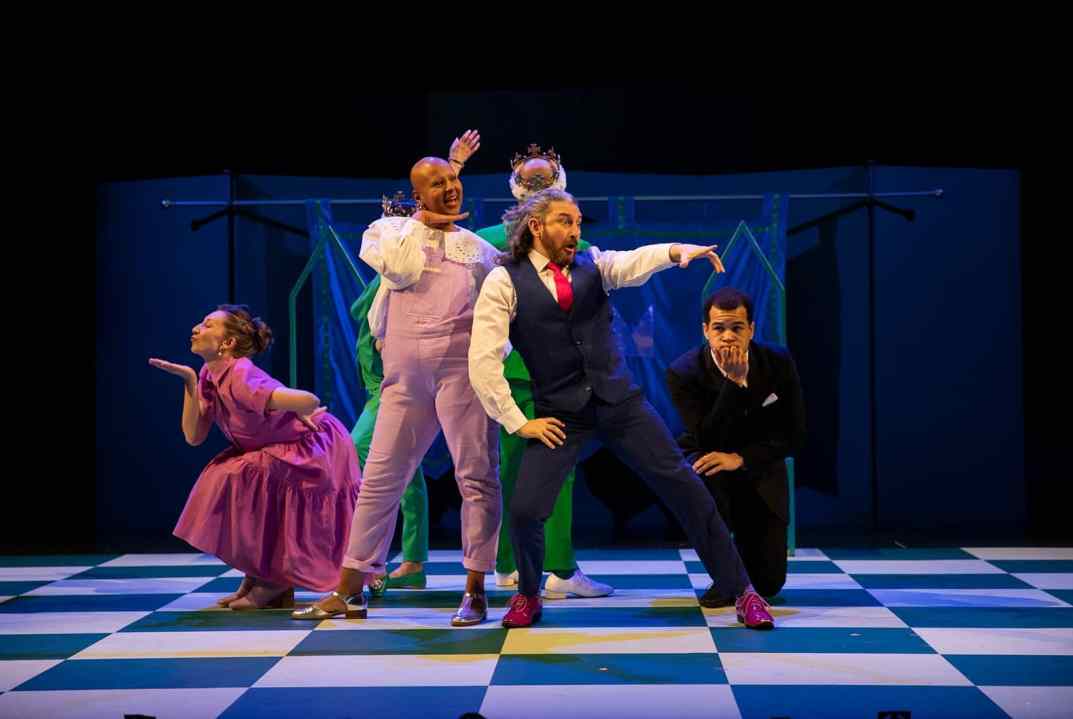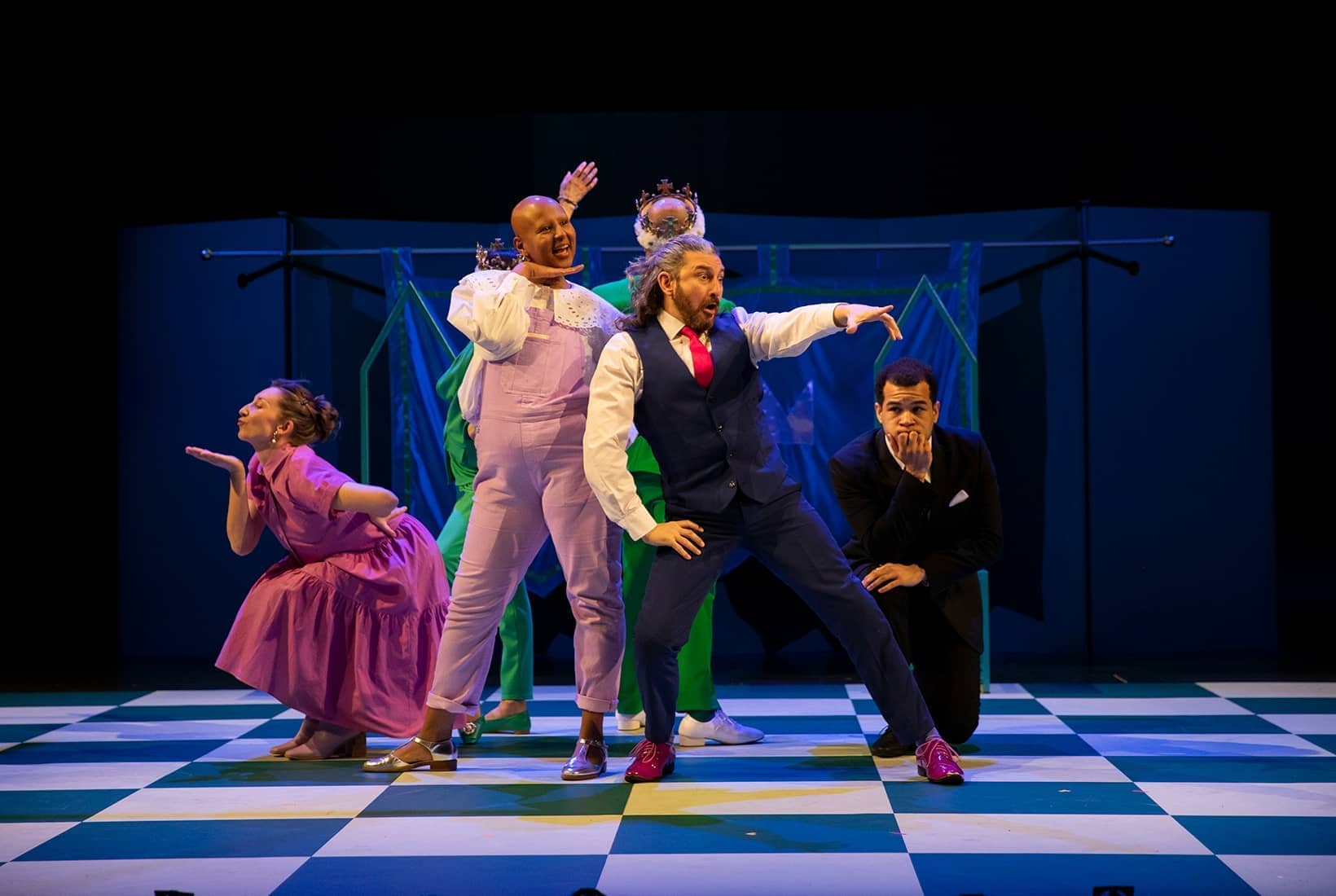The NT has rejigged Hamlet for 8- to 12-year-old children. It’s a decent attempt to cover the highlights at a sprint lasting just 90 minutes. A few gripes. The medieval setting is unclear because the courtiers wear matching red and yellow suits, like Butlins entertainers. Why not military costumes? British kids are used to seeing the royals in uniforms. And a martial emphasis would tell us that Elsinore is a heavily armed dictatorship where family rivalries may spill over into civil war. More swords and bucklers are needed.
Before curtain-up, the cast fanned out across the stage to wave at the children and have a chat. This broke the ice and ensured that the little tinkers kept quiet during the show. The adaptor, Jude Christian, has cut the text heavily without rewriting too much of it. And few dramatists would have dared to omit so many core elements. There’s no Horatio, no Osric, no ‘speech to the players’ and no gravedigger (thank God). No jittery guards on the battlements in the opening scene. The Ghost appears without any preamble and tells Hamlet to kill Claudius. The brevity is refreshing. Ophelia gets a new scene where she contemplates suicide and speaks some of Hamlet’s lines from ‘to be or not to be’. A great innovation. If the Bard saw this he’d realise that Ophelia deserved a big soliloquy before taking her plunge into the deadly brook.
Shakespearean directors should see this. And bring a notebook. There are excellent ideas here
The only serious error is the casting of a wan young actress as Laertes. In her lavender pinny, she looks like a nervous au pair at an interview. The audience can’t possibly guess that Laertes is a dangerous, red-blooded alpha male who mounts a counter-coup against Claudius when he learns of his father’s death. This ultra feminine Laertes mooches around like one of Hamlet’s former girlfriends. They hug tenderly when Ophelia is buried. And their duel at the end looks bizarre. Why is Hamlet trying to kill his ex-lover in a sword fight? The sexist brute.
The production I saw was packed in mid-afternoon. And the pesky little fidgets gave it their full attention, apart from one rebellious pipsqueak who stuck his fingers in his ears and stared at his lap throughout. A future critic, no doubt. The NT should do more of these Bard-lite productions. They’re good for kids. And Shakespearean directors should see them as well. Bring a notebook. There are excellent ideas here. Steal them.
To Kill a Mockingbird is a slick, handsome show based on the courtroom bestseller about a trumped-up rape trial in the Deep South. The production originated in America so the design and the atmosphere feel right. And it’s easy to understand because every character is either monstrously evil or sublimely virtuous. The only ambiguous figure, Cunningham, is a poor farmer who dons a Klan mask and joins a hate mob but who recants when his voice is recognised by a ten-year-old girl. Every other character is presented with pantomime simplicity. Love this person, hate that one.
Even within this binary scheme, the details are exaggerated. The defendant, Tom, is a pauper with a mangled arm who toils all day to support his family but who also finds time to help struggling white folks with their chores, for no money. He’s not a character but a meek, hardworking saint. Atticus Finch, his attorney, is the embodiment of Socratic rectitude. He’s like Jesus in one of Tom Wolfe’s three-piece suits. Nothing bothers him. When his neighbours threaten to hang him in the middle of the trial he doesn’t bother reporting the crime to the authorities. A lynch mob storms the prison house hoping to murder his client but Atticus soothes their anger with a few well-chosen legalistic niceties – and hey presto. The riot is over and the frustrated killers disperse peacefully. The complainant, Mayella, comes across as a weepy and moronic dishcloth who can’t put a coherent sentence together. Making her a halfwit conveniently removes her from the moral audit and prevents us from examining her culpability. Her father Bob, the chief accuser, isn’t just a thick, angry, drunken, racist bully. He also commits unspeakable crimes against his own children. The result is that all moral uncertainty is effaced. You’ll be stuck to find an issue to discuss during the post-match analysis because every issue has been solved for you on stage. That’s an odd failing for a play about ethics.
One worthy cause is stressed by the adaptor, Aaron Sorkin, who believes passionately in the judicial process and the rule of law. His script argues that the suspect would have been freed on appeal and that the true culprits would have been sent down. Rafe Spall adds some twinkly comic irony to Atticus but he can’t hope to emulate the majestic hauteur of Gregory Peck in the 1962 movie. Who could?








Comments